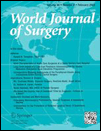Postoperative Outcomes After Laparoscopic Liver Resections in Low and High-Volume Centers: A Multicentric Case-Matched Comparative Study
Abstract
Background
Laparoscopic liver resection (LLR) is the gold standard for liver resections. Despite its feasibility and safety in high-volume centers (HVC), its performance is controversial in low-volume centers (LVCs). We aimed to evaluate the results of LLR performed in LVC.
Methods
Patients who underwent LLR between 2013 and 2019 in three LVCs were compared after case-matching with those in an HVC using the Institut Mutualiste Montsouris LLR Difficulty Score (IMMLDS).
Results
Seventy-six patients treated in three LVCs were matched to 152 in HVCs for age, body mass index, and resection type. The incidence of LLR significantly increased in LVCs over time (2013–2016 vs. 2017–2019) (21.2% vs. 39.3%; p = 0.002 and) while abdominal drainage rate decreased (77.4% vs. 51.1%; p = 0.003). In IMMLDS group I (60 vs. 120 patients), higher Pringle maneuver (43.3% vs. 2.5%; p < 0.0001), median blood loss (175 ml vs. 50 ml; p < 0.0001), abdominal drainage (58.3% vs. 6.6%; p < 0.0001), and conversion rate (8.3% vs. 1.6%, p = 0.04) were observed in LVCs. The overall postoperative morbidity was comparable (Clavien I–II: p = 0.54; Clavien > II: p = 0.71). In IMMLDS groups II-III, Pringle maneuver (56.5% vs. 3.1%; p < 0.0001), blood loss (350 ml vs. 175 ml; p = 0.02), and abdominal drainage (75% vs. 28.3%; p = 0.004) were different; however, postoperative morbidity was not. The surgical difficulty notwithstanding, length of stay (group I: p = 0.13; group II–III: p = 0.93) and R0 surgical margin (group I: p = 0.3; group II–III p = 0.39) were not different between LVCs and HVCs.
Conclusions
LLR performed at an LVC can be feasible and safe with acceptable morbidity.




